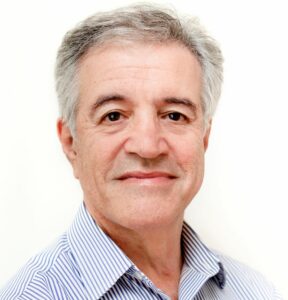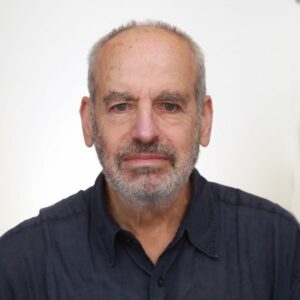
Australia’s proposed crackdown on vaping is unlikely to achieve its objectives.
By Stefanie Rossel
As a vaper in Australia, you basically have two choices. The first option is to behave like a good citizen, go to your doctor, get a prescription and convince a pharmacist to sell it to you. The alternative is to be not so good and do what 92 percent of Australian vapers do—source your e-cigarettes on the black market. Vapes have been regulated Down Under since October 2021 but so poorly that Australian health professionals speaking at the Warsaw Global Forum on Nicotine in June apologized for the legislation.
Getting a prescription is more difficult than one might think, according to Carolyn Beaumont, an Australian general practitioner (GP) who advocates for the right of adult smokers to access vaping products. As Beaumont explained during her presentation, among the many barriers is the challenge to find a doctor who is not only familiar with vaping products but also believes in their potential as smoking cessation tools. But Australia is a huge country, where most of the population—and doctors—live along the Eastern Seaboard. In other regions, there are fewer physicians. Additionally, clinics may not be open daily, wait times are getting worse, and more GPs are charging privately. An estimated 20 percent of Australians have no regular GP; Beaumont said it could be even 35 percent.
Doctors often lack product knowledge and have an inadequate understanding of smoking, vaping and nicotine dependence. Tobacco harm reduction is not taught in Australia, according to Beaumont, and the medical guidelines are not supportive of vaping. Doctors also face an administrative barrier: They need to be registered as an authorized nicotine prescriber. However, the prevailing negative media narrative in Australia makes many GPs reluctant to register. In April 2023, the Australian Department of Health and Aged Care listed 1,963 authorized prescribers nationwide, which equals one in 20 practitioners.
Once vapers have secured a prescription, they need to find a pharmacy that sells vapes. But few establishments do so, and often, they have only limited stock. Vapes can also be ordered online and imported for personal use under the Therapeutic Goods Administration’s (TGA) personal importation scheme. With a valid prescription, Australians may legally import a three-month supply per order. “It remains illegal for other Australian retailers, such as tobacconists, vape shops and convenience stores, to sell you nicotine vaping products, even if you have a prescription,” the TGA stresses on its website.
At present, merely 8 percent of vapers have a prescription, and only 2 percent purchase from pharmacies, according to a Roy Morgain survey in February 2023.
Additional Restrictions

Things are unlikely to get easier for smokers seeking less hazardous alternatives to combustible cigarettes. In May 2023, Health Minister Mark Butler announced a further crackdown on recreational vaping. He claimed that vaping had been advertised to the public as a therapeutic product meant to help smokers quit but instead spawned a new generation of nicotine users, particularly young people. At press time, details on the new rules were unavailable, but tobacco harm reduction advocates were bracing for restrictions on disposable vapes, flavor options and nicotine concentrations, along with a requirement to package vaping products in pharmaceutical-style packaging and an end to the personal importation scheme, with sales permitted only through authorized pharmacies.
Writing on his blog, professor Simon Chapman, a determined opponent of vaping, suggested that Butler might ban refillable vaporizers as well. The planned legislation will require federal authorities to seize products at the border and states to police retail sales, but so far, it has not allocated any funding to enforcement.
The proposed plan is de facto prohibition, according to Colin Mendelsohn, a former GP who has been helping smokers quit for more than 30 years. “It is a doubling down on a failed highly restrictive model that has been rejected by vapers and prescribing doctors and has created a thriving black market, which sells freely to underage users,” he says. “The history of prohibition and the war on drugs shows consistently that it does not reduce long-term illicit drug supply, and there is no reason to believe that this will be different. Bans are effective short-term political strategies but are bad public health policy. The Australian Border Force (ABF) does not have the resources or interest in intercepting vapes and is correctly more focused on dangerous illicit drugs, such as heroin, cocaine, ice, etc., or weapons.”
In an interview in May, ABF Chief Michael Outram warned that banning vapes at the border wouldn’t be enough to stamp out a rampant black market, as his organization managed to intercept barely 75 percent to 80 percent of illicit drugs making their way into Australia “on a good day.” Of the 8 million containers coming into the country each year, only 1 percent to 1.5 percent are scanned.
The proposed crackdown, cautions Mendelsohn, will likely have many unintended consequences. “Criminal networks will continue to find ways to import vapes,” he says. “This is a high-profit and low-risk crime, and it is accompanied by stand-over tactics, such as firebombing of retail outlets, gang wars and violence, and corruption of officials. The proceeds fund other, more serious criminal activities. There will be continuing sales to youth and more difficult legal access for adult smokers. Some vapers will relapse to smoking. It will be harder for current smokers to switch to vaping.”
According to Mendelsohn, the planned law will criminalize otherwise law-abiding citizens who simply want to improve their health, and cause the government to lose revenue from taxes, licensing and vape shops while shouldering increased cost of policing, enforcement, the justice system and prisons. “We will continue to see dodgy, mislabeled, unregulated products with high nicotine levels,” he says. “The harm from unregulated black market products was demonstrated during the EVALI [e-cigarette or vaping product use-associated lung injury] outbreak. There will also be higher prices, increased drug potency [and] stockpiling of nicotine e-liquids prior to the change. All legal, legitimate vape businesses will be closed. It’s a violation of the human right to access a safer alternative to smoking.”
Unsuccessful Measures
Low-income and otherwise disadvantaged people, among whom rates of smoking and smoking-related death and disease are significantly higher than in the rest of the population, will be disproportionately affected, according to Mendelsohn. “Australian research has shown that vaping may help to reduce health inequalities,” he says. “Smoking is a leading cause of financial stress in disadvantaged populations, especially at a time of sluggish wage growth, high interest rates and a high cost of living. Spending is diverted from food, clothing, etc., to smoking.”
Australia has the highest cigarette prices in the world, with a pack of 20 retailing at AUD40 ($25.60). Based on a consumption of 13 cigarettes a day, the average cost of smoking is AUD11,850 per year. Vaping, by comparison, costs AUD500 to AUD1,500 per year, depending on the device used.
“At the current high levels, further tax rises are no longer effective due to the law of diminishing returns,” says Mendelsohn. “Many addicted smokers are simply unable to quit no matter how high the price. Smoking rates in Australia have not declined over the last four years in spite of high prices, plain packaging and other tobacco control strategies.”
So where’s the consumer in all of this? Mendelsohn says that the lack of a consumer voice is a big problem. “We had a New Nicotine Alliance AU, which disbanded about five years ago. Recently, the Australian Smokefree Alternatives Consumer Association was formed but is still very quiet. Legalise Vaping is a part of the Australian Taxpayers Association and is the most active advocacy group. I believe they have had some indirect tobacco company funding in the past, but they are focused on legalizing and regulating vaping and the rights of adults to make their own choices. Overall, they do an excellent job with limited resources. All anti-vaping groups are subject to great scrutiny and are smeared and undermined by anti-vaping advocates if there is any potential opportunity.”
Ideology Instead of Science
Butler’s plan has attracted criticism from several institutions. On July 8, internal confidential e-mails sent by members of the Australian National Advisory Council on Alcohol and Other Drugs (ANACAD) expressed concerns about further restrictions, saying it would exacerbate the black market problem, criminalize more people and make smoking more attractive. On July 18, Mendelsohn and a group of more than 40 experts from Australia and New Zealand urged lawmakers to listen to the ANACAD ahead of Butler’s proposed vaping crackdown. At the time of this interview, they had not received a response to their letter.
Mendelsohn is not optimistic that Butler will change course. “Butler has committed himself to this crackdown, and there is no indication that he will soften his approach,” he says. “He is taking advice from a small group of ideologically driven tobacco control academics and health bureaucrats with extreme anti-vaping views.” According to Mendelsohn, Butler operates in a bubble and is ignoring the pro-vaping arguments. “He has refused to meet with Dr. Wodak [a fellow tobacco harm reduction proponent] and me, although we met with his adviser, who was clearly committed to a predetermined position,” says Mendelsohn. “He is under considerable pressure from Australian health charities, medical associations, public health organizations and state governments that are almost universally opposed to vaping. The media is also hostile to vaping. Any turnaround will be very difficult politically.”
Vaping policy in Australia, says Mendelsohn, is driven by ideology rather than science. “Australia’s peak health and medical research organization, the National Health and Medical Research Council (NHMRC), prepared an anti-vaping position paper on vaping. The NHMRC is very influential in guiding national health policy. The NHMRC document was critiqued in a peer-reviewed article in Addiction by leading Australian and international experts and found to be riddled with serious scientific flaws and misinformation. However, it remains unchanged.”
For sensible regulation of vaping, says Mendelsohn, Australia should look to its neighbor, New Zealand, which in August 2020 legalized and regulated vaping. “Over the next two years, there was an unprecedented 33 percent decline in the adult smoking rate among those aged 15 and over—from 13.7 percent to 9.2 percent. In Australia during the same period, the smoking rate increased by 4.5 percent. In that time, there have been no major smoke-free policy interventions, almost no mass media spend on quit campaigns and no tobacco tax increases in NZ.”
Lessons From Drug Policy

Alex Wodak, Mendelsohn’s ally in the battle for harm reduction-based legislation, is more confident that Australia will eventually change its stance on vaping. Wodak has dedicated his career to drug harm reduction and was instrumental in reforming drug law in Australia. Together with colleagues, he created the country’s first needle exchange program in 1986 and its first medically supervised injecting center in 1999. At this time, both were pre-legal.
He observes parallels with his country’s current crackdown on vaping. “The World Health Organization opposed drug harm reduction, including needle and syringe programs for a few years in the 1990s, apparently relenting to intense U.S. pressure,” says Wodak. “The default policy for communities, governments and the WHO for new drugs, new forms of drug administration and new forms of drug harm reduction is generally negative. It seems sensible to be initially cautious about changing situations regarding drugs, but we have a problem when the opposition to a new form of drug harm reduction is maintained long after the evidence of effectiveness and safety has become compelling, especially when the costs of delay are so substantial as they are with needle and syringe programs and tobacco harm reduction.
“The case in favor of vaping and other forms of tobacco harm reduction is now overwhelming. Smokers increasingly prefer to continue to use nicotine but prefer to consume it in safer ways. Many traded tobacco companies are transforming from combustible cigarettes to safer products, some faster than others, but they are changing. Investors pay higher prices for tobacco companies transforming more rapidly. Unfortunately, tobacco control, governments and the WHO are still resisting change, which now seems inevitable. This change is an enormous opportunity for public health, similar to the scale of the benefits from vaccination.”
Wodak remembers the time when harm reduction was refused in favor of an abstinence-only approach in drug policy circles. “The political debate lags behind the scientific debate,” he says. “There are many lessons from this experience. It is important to continue improving the quantity and quality of evidence. It eventually does make a difference. Being polite and respectful to harm reduction opponents matters. So does persistence. There are no shortcuts. Harm reduction involves consequentialism—that is, making an assessment of both the benefits and costs of a policy or intervention. Opposition to harm reduction often involves deontology—that is, following a set principle, such as aiming for a tobacco-free—or nicotine-free—outcome rather than a smoke-free outcome. The net effect of the policy or intervention is not a concern.”
Staying Power Needed
The current approach of the Australian government to vaping is unsustainable, Wodak emphasizes. “It is destined to collapse sooner or later,” he says. “Opponents of harm reduction are unable to justify why a far safer option is severely restricted while a deadly option remains readily available. Despite dominating politics, mainstream media and medical and health publications, 73 percent of Australians support vaping being regulated like cigarettes and alcohol while only 20 percent support prescription-only regulation of vaping.”
The new approach announced by Butler on May 1 requires legislation to be passed by the House of Representatives and the Senate. “This legislation will most likely be passed by the House of Representatives but is unlikely to be passed by the Senate,” says Wodak. “The black market currently meets 92 percent of the demand from a rapidly growing number of adult Australian vapers, now estimated to number 1.3 million. Although the government asserts it will strengthen law enforcement border efforts to reduce the number of illegal vapes entering Australia, now estimated at about 10 million per month, no additional funds have been provided for this purpose. Heroin was prohibited 70 years ago in Australia. However, in 2022, a survey of people who use drugs found that 87 percent said that obtaining heroin was ‘easy’ or ‘very easy.’ When demand for a good or service is strong and controls are easy to subvert, as is the case with vaping, other sources of supply almost invariably emerge.”
Wodak views the battle for vaping reform in Australia through the lens of drug harm reduction rather than from a perspective of tobacco control. “I have been involved in battles for drug law reform in Australia over about 40 years. We have won almost all of these battles, although it has often taken more time and effort than we would have preferred. I am very confident that tobacco harm reduction will prevail in Australia. Taking a bet against drug harm reduction is very brave as harm reduction almost always wins.”


